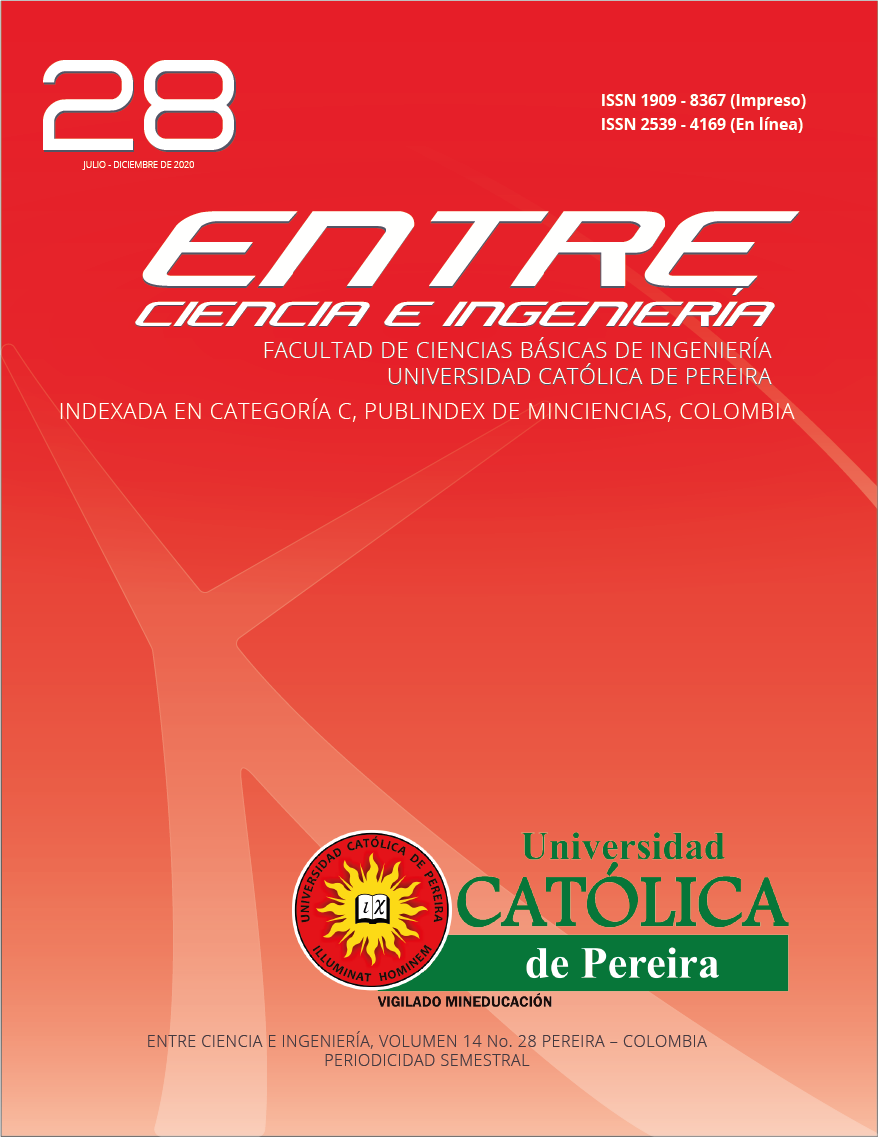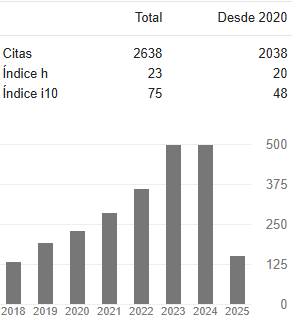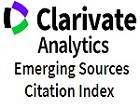Acceptance and Trust of Bitcoin in México: An empirical research
DOI:
https://doi.org/10.31908/19098367.2011Keywords:
Acceptance, Bitcoin, Cryptocurrencies, Trust, UTAUT2Abstract
Bitcoin is part of the so-called crypto-currencies and can be defined as a universal decentralized public electronic payment system based on Blockchain technology. The problem it faces is trust in its use; therefore, the objective of this research is to analyze the factors that influence the adoption and use of Bitcoin in Mexico. For this purpose, the UTAUT2 model integrated with the trust variable, is used. The model was empirically tested by applying a survey of 106 questionnaires, under the partial least square’s method, with structural equation models (PLS-SEM). The main results indicate that performance expectation, hedonistic motivation, habit, and its decentralization; are the main factors that influence confidence for the adoption and use of Bitcoin. The results illustrate to companies and any interested party the advantages of using Bitcoin.
Downloads
References
Y. C. Yeong, K. S. Kalid, and S. K. Sugathan, “Cryptocurrency acceptance: A case of Malaysia,” Int. J. Eng. Adv. Technol., vol. 8, no. 5, pp. 28–38, 2019.
S. Nakamoto, “Bitcoin: A peer-to-peer electronic cash system,” http://bitcoin.org/bitcoin.pdf,” 2008.
CoinMarketCap, “Cryptocurrency Market Capitalizations CoinMarketCap,” 2020. [Online]. Available: https://coinmarketcap.com/. [Accessed: 25-May-2020].
C. R. López Zambrano and M. Camberos Castro, “El Bitcoin y las Criptomonedas: ¿Impacto En La Economía?,” CAACSX. Memorias del Coloq. Nac. Investig. en las Ciencias Económicas y Adm., vol. 3, no. 3, pp. 409–433, 2019.
CoinDance, “Coin Dance | Bitcoin Statistics,” 2020. [Online]. Available: https://coin.dance/stats. [Accessed: 12-May-2020].
M. Rauchs, A. Blandin, K. Klein, G. C. Pieters, M. Recanatini, and B. Z. Zhang, “2nd Global Cryptoasset Benchmarking Study,” SSRN Electron. J., Mar. 2018.
A. A. Alalwan, Y. K. Dwivedi, and N. P. Rana, “Factors influencing adoption of mobile banking by Jordanian bank customers: Extending UTAUT2 with trust,” Int. J. Inf. Manage., vol. 37, no. 3, pp. 99–110, Mar. 2017.
P. Esmaeilzadeh, H. Subramanian, and K. Cousins, “Individuals’ cryptocurrency adoption: A proposed moderated-mediation model,” 25th Am. Conf. Inf. Syst. AMCIS 2019, no. Saito 2015, pp. 1–10, 2019.
D. Folkinshteyn and M. Lennon, “Braving Bitcoin: A technology acceptance model (TAM) analysis,” J. Inf. Technol. Case Appl. Res., vol. 18, no. 4, pp. 220–249, 2016.
A. Walton and K. Johnston, “Exploring perceptions of bitcoin adoption: The South African vir-tual community perspective,” Interdiscip. J. Information, Knowledge, Manag., vol. 13, pp. 165–182, 2018.
M. Arias-Oliva, J. Pelegrín-Borondo, and G. Matías-Clavero, “Variables influencing cryptocurrency use: A technology acceptance model in Spain,” Front. Psychol., vol. 10, no. MAR, pp. 1–13, 2019.
N. Mahomed, “Understanding consumer adoption of cryptocurrencies,” 2017.
C. Roos, “The motivation and factors driving crypto-currency adoption in SMEs,” 2015.
F. Shahzad, G. Xiu, J. Wang, and M. Shahbaz, “An empirical investigation on the adoption of cryptocurrencies among the people of mainland China,” Technol. Soc., Oct. 2018.
R. Novendra and F. E. Gunawan, “Analysis Of Technology Acceptance And Customer Trust In Bitcoin In Indonesia Using UTAUT Framework,” KSII Trans. Internet Inf. Syst., no. January, 2017.
A. T. F. Lou and E. Y. Li, “Integrating innovation diffusion theory and the technology acceptance model: The adoption of blockchain technology from business managers’ perspective,” Proc. Int. Conf. Electron. Bus., vol. 2017-Decem, pp. 299–302, 2017.
K. Owusu Kwateng, K. A. Osei Atiemo, and C. Appiah, “Acceptance and use of mobile banking: an application of UTAUT2,” J. Enterp. Inf. Manag., vol. 32, no. 1, pp. 118–151, 2019.
M. Hair, J. F., Hult, G. T. M., Ringle, C. M., & Sarstedt, “A Primer on Partial Least Squares Structural Equation Modeling (PLS-SEM). Thousand Oaks,” Sage, p. 165, 2013.
B. Inoue, “Performance of Bitcoin Protocol Variants,” 2016.
G. Zaera, “Bitcoin : Bases , comportamiento como,” Universdade Da Coruña, 2014.
V. Sadhya, H. Sadhya, R. Hirschheim, and E. Watson, “Exploring technology trust in Bitcoin: The blockchain exemplar,” 26th Eur. Conf. Inf. Syst. Beyond Digit. - Facet. Socio-Technical Chang. ECIS 2018, pp. 1–16, 2018.
V. Venkatesh, M. G. Morris, G. B. Davis, and F. D. Davis, “User acceptance of information technology: Toward a unified view,” MIS Q. Manag. Inf. Syst., vol. 27, no. 3, pp. 425–478, 2003.
T. Oliveira, M. Faria, M. A. Thomas, and A. Popovič, “Extending the understanding of mobile banking adoption: When UTAUT meets TTF and ITM,” Int. J. Inf. Manage., vol. 34, no. 5, pp. 689–703, 2014.
T. Zhou, Y. Lu, and B. Wang, “Integrating TTF and UTAUT to explain mobile banking user adoption,” Comput. Human Behav., vol. 26, no. 4, pp. 760–767, Mar. 2010.
I. K. Mensah, L. Chuanyong, and G. Zeng, “Factors determining the continued intention to use mobile money transfer services (MMTS) among university students in Ghana,” Int. J. Mob. Hum. Comput. Interact., vol. 12, no. 1, pp. 1–21, 2020.
H. Gunawan, B. L. Sinaga, and S. P. WP, “Assessment of the Readiness of Micro, Small and Medium Enterprises in Using E-Money Using the Unified Theory of Acceptance and Use of Technology (UTAUT) Method,” Procedia Comput. Sci., vol. 161, pp. 316–323, 2019.
T. Zhou, Y. Lu, and B. Wang, “Integrating TTF and UTAUT to explain mobile banking user adoption,” Comput. Human Behav., vol. 26, no. 4, pp. 760–767, Mar. 2010.
V. Venkatesh, J. Y. L. Thong, and X. Xu, “Consumer acceptance and use of information technology: Extending the unified theory of acceptance and use of technology,” MIS Q., vol. 36, no. 1, pp. 157–178, 2012.
T. Oliveira, M. Thomas, G. Baptista, and F. Campos, “Mobile payment: Understanding the determinants of customer adoption and intention to recommend the technology,” Comput. Human Behav., vol. 61, no. 2016, pp. 404–414, 2016.
A. A. Alalwan, Y. K. Dwivedi, and N. P. Rana, “Factors influencing adoption of mobile banking by Jordanian bank customers: Extending UTAUT2 with trust,” Int. J. Inf. Manage., vol. 37, no. 3, pp. 99–110, 2017.
M. A. Mahfuz, L. Khanam, and H. Wang, “The influence of culture on m-banking technology adoption: An integrative approaches of UTAUT2 and ITM,” PICMET 2016 - Portl. Int. Conf. Manag. Eng. Technol. Technol. Manag. Soc. Innov. Proc., pp. 824–835, 2017.
N. Mahomed, “Understanding consumer adoption of cryptocurrencies,” 2017.
N. Rodenrijs and J. Wokke, “Will social media make or break the acceptance in new technology? A quantitative study of consumer acceptance in cryptocurrency,” 2018.
F. Shahzad, G. Y. Xiu, J. Wang, and M. Shahbaz, “An empirical investigation on the adoption of cryptocurrencies among the people of mainland China,” Technol. Soc., vol. 55, no. May, pp. 33–40, 2018.
A. Walton and K. Johnston, “Exploring perceptions of bitcoin a doption : the south african virtual community perspective,” vol. 13, pp. 165–182, 2018.
D. Gefen, E. Karahanna, and W. Straub, Detmar, “Trust and TAM in Online Shopping: An Integrated Model,” MIS Quart., vol. 27, no. 1, pp. 51–90, 2003.
V. Venkatesh, M. G. Morris, G. B. Davis, and F. D. Davis, “User acceptance of information technology: Toward a unified view,” MIS Q. Manag. Inf. Syst., vol. 27, no. 3, pp. 425–478, Mar. 2003.
F. D. Davis, R. P. Bagozzi, and P. R. Warshaw, “User Acceptance of Computer Technology: A Comparison of Two Theoretical Models,” Manage. Sci., vol. 35, no. 8, pp. 982–1003, 1989.
S. Afshan and A. Sharif, “Acceptance of mobile banking framework in Pakistan,” Telemat. Informatics, vol. 33, no. 2, pp. 370–387, 2016.
T. Zhou, Y. Lu, and B. Wang, “Integrating TTF and UTAUT to explain mobile banking user adoption,” Comput. Human Behav., vol. 26, no. 4, pp. 760–767, 2010.
V. Venkatesh, J. Y. L. Thong, and X. Xu, “Venkatesh_Thong_Xu_MISQ_forthcoming (Gender Age Experience),” MIS Q., vol. 36, no. 1, pp. 157–178, 2012.
T. Zhou, “Examining mobile banking user adoption from the perspectives of trust and flow experience,” Inf. Technol. Manag., vol. 13, no. 1, pp. 27–37, 2012. I. Ajzen, “The Theory of Planned Behavior,” Organ. Behav. Hum. Decis. Process., vol. 50, no. 1, pp. 179–211, 1991.
J. F. Hair, M. Sarstedt, C. M. Ringle, and J. A. Mena, “An assessment of the use of partial least squares structural equation modeling in marketing research,” J. Acad. Mark. Sci., vol. 40, no. 3, pp. 414–433, 2012.
O. Leyva Cordero and J. T. Olague, Modelo de Ecuaciones Estructurales por el método de mínimos cuadrados parciales (PLS), no. April 2015. 2014.
J. F. Hair, M. Sarstedt, L. Hopkins, and V. G. Kuppelwieser, “Partial least squares structural equation modeling (PLS-SEM): An emerging tool in business research,” Eur. Bus. Rev., vol. 26, no. 2, pp. 106–121, 2014.
M. A. Mahfuz, L. Khanam, and W. Hu, “The influence of culture on m-banking technology adoption: An integrative approaches of UTAUT2 and ITM,” in 2016 Portland International Conference on Management of Engineering and Technology (PICMET), 2016, pp. 824–835.
D. Gefen, V. Srinivasan Rao, and N. Tractinsky, “The conceptualization of trust, risk and their electronic commerce: The need for clarifications,” Proc. 36th Annu. Hawaii Int. Conf. Syst. Sci. HICSS 2003, vol. 00, no. C, pp. 1–10, 2003.
Downloads
Published
Issue
Section
License
Copyright (c) 2020 Entre ciencia e ingeniería

This work is licensed under a Creative Commons Attribution-NonCommercial 4.0 International License.



















